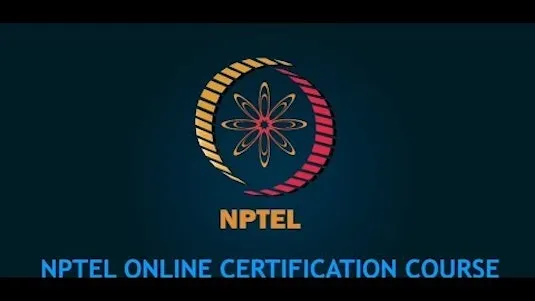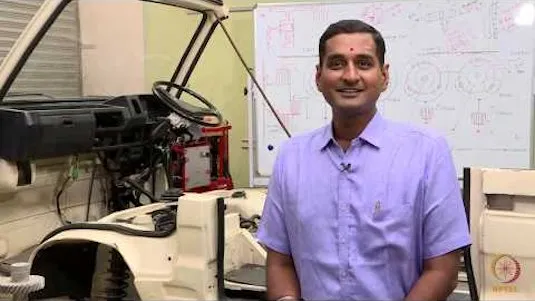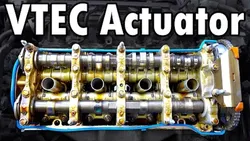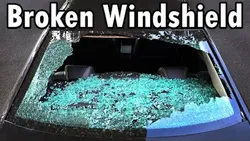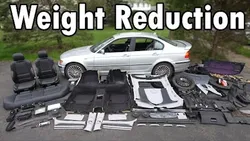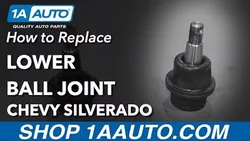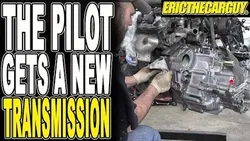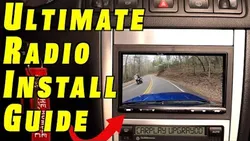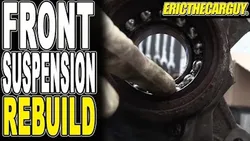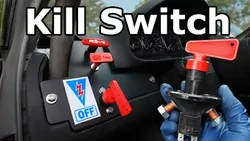Free Online Automotive Technology Courses and Certifications 2024
Automotive Technology is a fascinating field of science that focuses on the design, development, and production of automobiles. It is a rapidly evolving field that requires a deep understanding of the latest technologies and trends. With the help of online courses, students can gain the knowledge and skills necessary to become successful in this field. Automotive Technology is a great way to learn about the science behind the cars you drive every day.
Popular Courses
This course provides an introduction to Ergonomics/ Human Factors Engineering in Automotive Design, helping students and teachers involved in Automobile Design and Engineering to understand the physical, cognitive and environmental aspects of vehicle components and occupants. It is beneficial for engineers and designers engaged in automotive sectors.
Learn MoreThis course provides a fundamental understanding of the various systems of a typical automobile. It covers topics such as the design and layout of each system, and the application of mathematical models to synthesize the systems. It is intended for 3rd/4th year undergraduate and 1st year M.Tech./M.S./Ph.D. students, and requires prior knowledge of Rigid Body Dynamics, Thermodynamics, and Fluid Mechanics.
Learn MoreThis course provides an overview of the various dashboard warning lights in a car. It covers the introduction, safety symbols, light symbols, common symbols, and advanced feature symbols. It is designed to help drivers understand the meaning of the various warning lights and how to respond to them.
Learn MoreThis comprehensive DIY guide provides step-by-step instructions on how to replace a VTC Actuator. It covers how to diagnose a bad cam phaser, the tools and products needed, how to remove the old cam phaser, how to set the engine to top dead center, how to remove the timing chain tensioner, and how to install the new VTC Actuator. With this guide, anyone can easily replace their VTC Actuator.
Learn MoreThis course teaches students how to properly replace a rear windshield without the need for special tools. It covers topics such as where to buy a windshield, how to test the window defroster, tools and products needed, broken windshield removal, preparing the car pinch weld surface for glass, preparing the windshield for install, applying primer to the windshield and car pinch weld, cutting urethane tip, applying windshield urethane, installing the rear windshield and checking the rear defroster and checking for leaks.
Learn MoreThis course provides an introduction to weight reduction for cars, and covers topics such as 0-60mph testing, removing seats, trunk weight reduction, interior plastic trim removal, E46 center console removal, and carpet removal. It provides detailed instructions on how to reduce the weight of a car, allowing for improved performance.
Learn MoreThis course provides an overview of how to locate common coolant leak locations in GM 3.8 Liter and Ford 4.0 Liter engines. It explains how gaskets can fail due to EGR heat, causing leaks in the intake manifold, and how a leak in the thermostat housing can cause a sweet smell from the engine and no heat. It also provides tips on how to identify and fix these common coolant leaks.
Learn MoreThis tutorial provides a step-by-step guide on how to replace the ball joint on a 99-15 Chevy Silverado 1500. The process involves removing the wheel, brake caliper and rotor, tie rod end, and knuckle, before installing the new ball joint and reassembling the components. With this guide, anyone can easily replace the ball joint on their Chevy Silverado.
Learn MoreWhen the ABS light comes on and the brakes feel fine, it is important to take the necessary steps to diagnose the issue. A road test should be conducted to confirm the ABS light and symptoms, followed by a scan tool to read codes and live data. A visual inspection of the brake system should then be done to identify any potential problems, such as a damaged exciter ring. If a problem is found, it should be replaced or repaired.
Learn MoreThis course covers the replacement of a Honda Pilot transmission. It includes the removal of the engine and transmission, stripping of the subframe, removal of the power steering rack, removal of a broken bolt, reconditioning of the subframe, transmission swap, and rear main seal reassembly.
Learn MoreThis course provides a comprehensive guide on how to replace and upgrade car speakers. It covers the steps of removing the door panel, drilling rivets to remove the lower speaker, choosing the right speakers, creating custom tweeter mounts, adding speaker accessories and sound deadening, and finally, properly installing the speakers. With this course, users will be able to upgrade their car speakers with ease.
Learn MoreThis guide provides a comprehensive overview of the process of upgrading a car stereo system. It covers the tools and equipment needed, harness breakdown, VW wiring, crimping the harness, removing the old radio, testing the new radio, completing the harness, direct fit microphone, and taping. With this guide, users can confidently upgrade their car stereo system and enjoy the latest audio technology.
Learn MoreThis course covers the complete rebuild of the front suspension of a Honda Pilot. It includes engine washing, thread repair, stud replacement, hub removal, front strut replacement, wheel bearing replacement, inner CV boot prep and painting, and reassembly. All steps are explained in detail to ensure a successful rebuild.
Learn MoreThis course covers the servicing of a Honda Pilot engine, including electrical repairs, intake removal and cleaning, idle air control valve removal, valve cover removal and reconditioning, exhaust manifold removal, VTEC gasket replacement, reassembly, and lower control arm installation.
Learn MoreThis course provides a step-by-step guide on how to install a battery kill switch. It covers the tools and products needed, the wiring diagram, how to crimp battery cables, adding split wire loom tubing, installing the battery cables, organizing the wiring, ECU cut off wiring, and finally, the kill switch installation. With this guide, users can easily install a battery kill switch.
Learn MoreThis article examines the effectiveness of head gasket sealers. It explains how a head gasket works, how to check for a leak, and how to add a sealer. After two years of testing, the results of engine disassembly showed that the sealer had worked. The article concludes that head gasket sealers can be an effective solution for head gasket leaks.
Learn More Automotive Technology Courses
Career Trends
Career Prospects
| Average Salary | Position Overview
|
| Software Engineer | $166,416 per year
| Software engineers utilize engineering concepts and their knowledge of programming languages to develop software solutions that cater to the needs of end-users. |
| utomotive Mechanic | $28.45 per hour | An Automotive Mechanic performs routine maintenance tasks such as oil changes, fluid level checks, and tire rotations. They also diagnose and repair faulty parts, such as brake pads, wheel bearings, and sensors, following both manufacturer and customer specifications. Additionally, they communicate automotive issues and the necessary repairs to clients. |
| Automotive Technician | $21.94 per hour | The Automotive Technician course series covers tasks related to fleet maintenance, including inspecting, diagnosing, adjusting, and repairing mechanical and electrical components of vehicles. It also involves scheduling maintenance and repairs for a fleet of vehicles with private vendors. |
| Technical Manager | $92,000 per year | A technical manager is responsible for overseeing the development, implementation, and maintenance of technological systems and processes within a company. They are tasked with troubleshooting any potential issues that may arise. |
| Senior Principal Engineer | $109,782 per year | Senior principal engineers are responsible for developing and implementing strategic methods and principles to enhance the technical stability and efficiency of the company's systems. They create business proposals that align with clients' specifications and negotiate contracts with suppliers and other service providers. |
Educational Paths
1. Certificate or Diploma Programs in Automotive Technology
2. Associate Degree in Automotive Technology
3. Bachelor's Degree in Automotive Technology
4. Manufacturer-Sponsored Training Programs
5. Apprenticeships in Automotive Technology
6. Continuing Education Courses in Automotive Technology
7. Vocational or Trade School Programs in Automotive Technology
Frequently Asked Questions and Answers
Q1: What is the duration of an Automotive Technology Course, and what are the key topics covered in it?
If you're looking to pursue Automotive Technology, the platform offers both full-time and part-time programs. The full-time daytime program is a 2-year program with 64 weeks of instruction time, while its part-time evening program is designed for those with busy day schedules. Whichever program you choose, you'll be well-equipped to enter the automotive industry.
Q2: Is automotive technology the same as a mechanic?
While mechanics were traditionally perceived as individuals who would physically dismantle vehicles to identify and troubleshoot issues, auto technicians are now regarded as repair shop wizards who employ computers and advanced technology to diagnose and address problems in the cars or trucks they are servicing. They utilize a combination of technical expertise, software, and diagnostic tools to efficiently identify and resolve issues, ensuring optimal performance and functionality.
Q3: What Automotive Technology courses can I find on AZ Class?
On this page, we have collected free or certified 36 Automotive Technology online courses from various platforms. The list currently only displays up to 50 items. If you have other needs, please contact us.
Q4: Can I learn Automotive Technology for free?
Yes, If you don’t know Automotive Technology, we recommend that you try free online courses, some of which offer certification (please refer to the latest list on the webpage as the standard). Wish you a good online learning experience!
